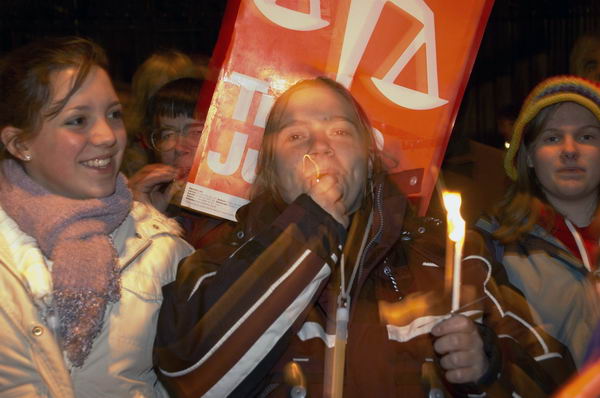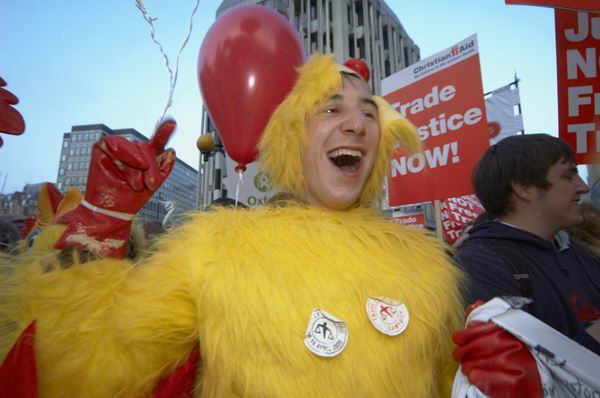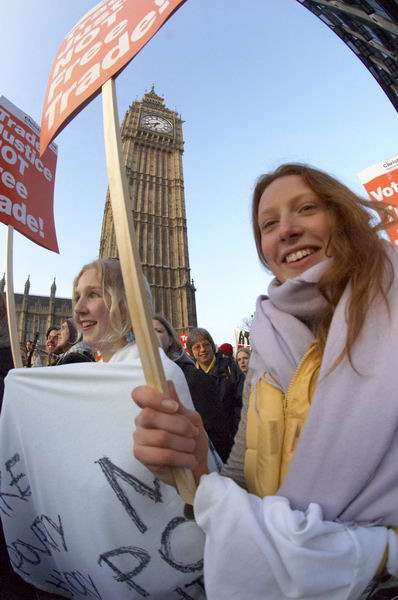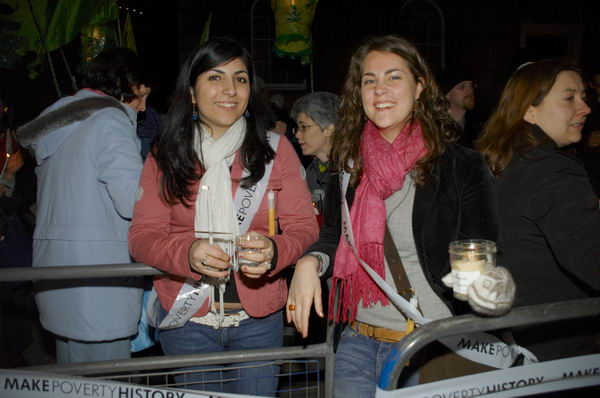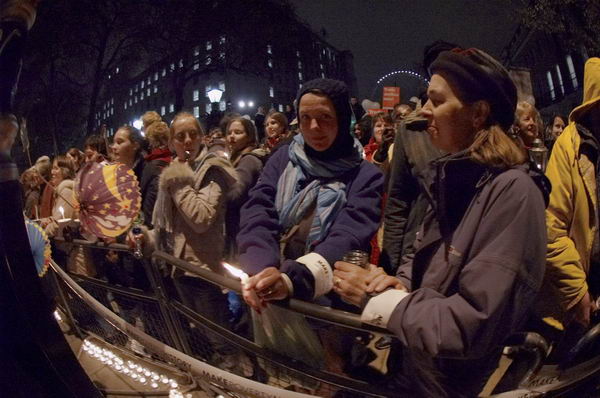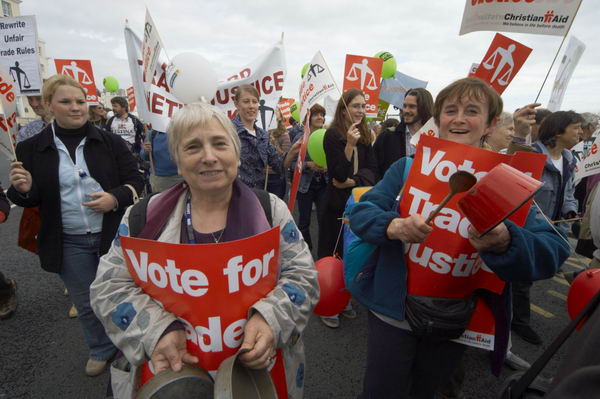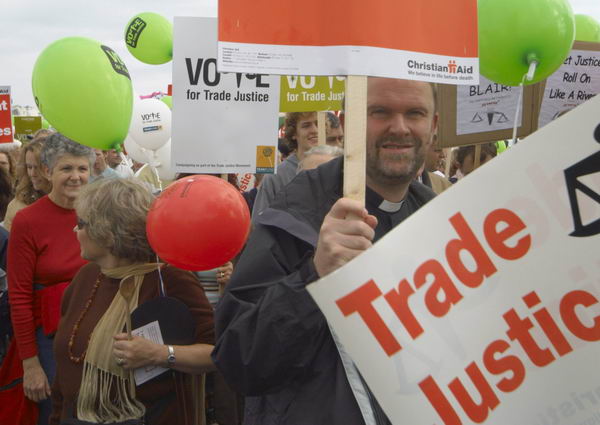Trade Justice Mass Action. Thursday 19th April 2007 saw a mass action by the Trade Justice Movement in London which was a part of a wider global day of action by campaigners across Europe as well as in Africa, the Caribbean and the Pacific – the ‘APC’ countries.

The protest was particularly about the agreements between the APC countries and the EU, and the unfair trade deals (economic partnership agreements or EPAs) that the EU was negotiating. The African, Caribbean and Pacific Group of States organisation was founded in 1975 and the 71 countries then involved came to an trade agreement with the European Economic Community (EEC) in Lomé, Togo, the Lomé Convention.

This “provided for most ACP agricultural and mineral exports to enter the EEC free of duty. Preferential access based on a quota system was agreed for products, such as sugar and beef, in competition with EEC agriculture” from the 71 countries in the ACP and it also provided funds for aid and investment.
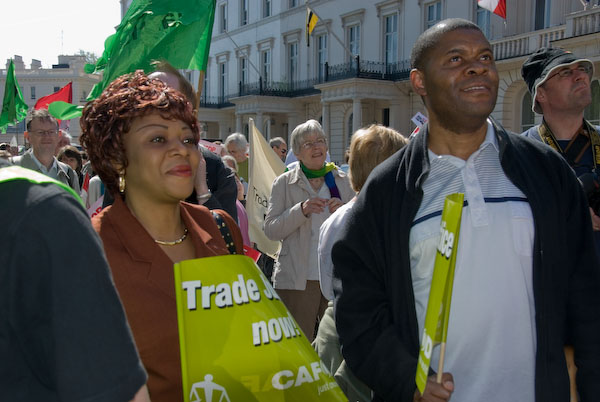
The Lomé Convention was twice updated but in 1995 the United States complained to the World Trade Organisation that it was unfair to them and the WTO Dispute Settlement Body ruled in their favour. Many argue that the WTO prioritizes the interests of wealthy nations and multinational companies and undermines national sovereignty, and hinders efforts to address global issues like poverty and climate change.
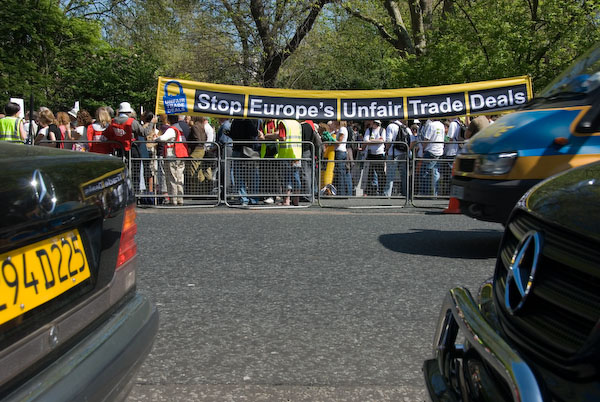
Negotiations between the European Union and the 78 ACP countries held in Coutonou, Benin in 2000 led to a new agreement, the Cotonou Agreement, signed by all except Cuba, which came into force in 2003 – and was later revised in 2005 and 2010.
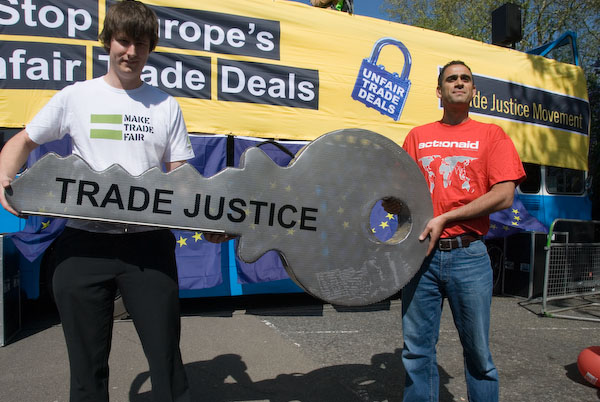
According to Wikipedia, “The Cotonou Agreement is aimed at the reduction and eventual eradication of poverty while contributing to sustainable development and to the gradual integration of ACP countries into the world economy. The revised Cotonou Agreement is also concerned with the fight against impunity and promotion of criminal justice through the International Criminal Court.”

The ACP, now renamed the Organisation of African, Caribbean and Pacific States, came to a new agreement, the Samoa Agreement, to replace this which entered into force provisionally in January 2024 but has proved more controversial, particularly because of its support for gender equality.

The Mass Action in 2007 was organised by the Trade Justice Movement, which included 78 UK-based organisations including aid organisations such as Action Aid, Cafod, Christian Aid, Oxfam, Tearfund, War On Want and the World Development Movement, trade unions, churches, fair trade groups and more.
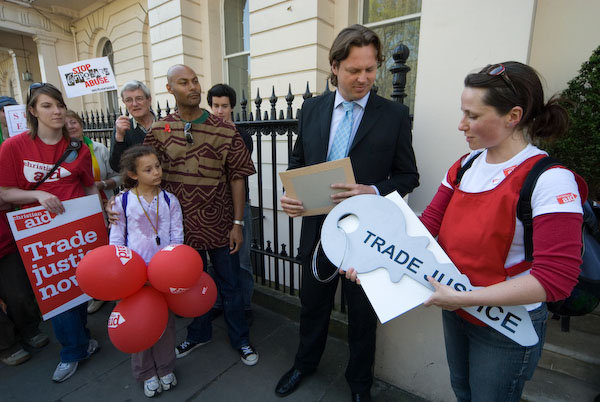
It began with a rally in Belgrave Square, a square containing many empbassies. The rally was outside the German (and Austrian) embassies, with speakers from a number of the groups including Frances O’Grady from the Trade Union Congress, Tony Juniper of Friends of the Earth and speakers from some APC countries.
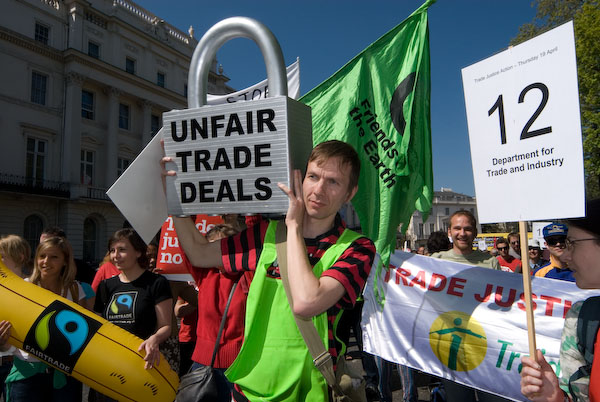
At the end of the rally groups left to deliver a letter and a large key to every EU country’s embassy with a letter and a key, demanding that the EU stops negotiating unfair trade deals (economic partnership agreements or EPAs) with developing countries. One group went to the Department of Trade and Industry to deliver to the UK. I could not go with all the groups going to all 27 locations to deliver these, but did manage to take photographs of the groups outside the Finnish, Spanish and Austrian embassies.
Flickr – Facebook – My London Diary – Hull Photos – Lea Valley – Paris
London’s Industrial Heritage – London Photos
All photographs on this page are copyright © Peter Marshall.
Contact me to buy prints or licence to reproduce.
